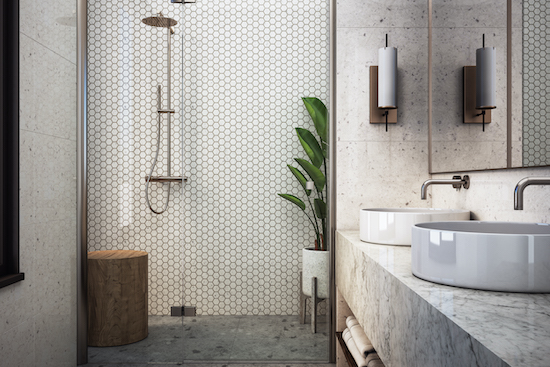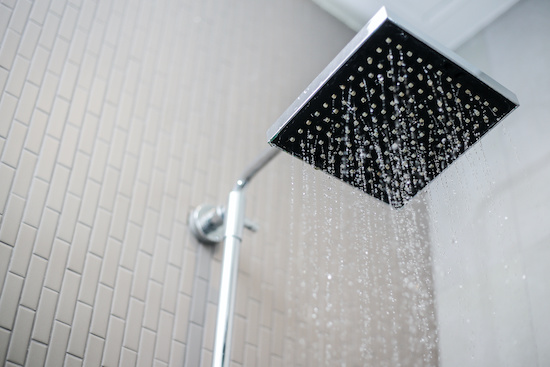– sponsored content –
Flood testing is a critical step to ensure the performance and customer satisfaction of any shower tile installation that will be subjected to continuous water flow. If the tile isn’t watertight, you could be responsible for costly repairs due to water leaks, mold and other serious moisture issues. A properly done flood test will help prevent future problems and customer callbacks that cost time and money.
Let’s first recognize that installing a durable, waterproof shower can be a challenge. Cement board, backer board, thin set mortar, tile, grout and sealers don’t automatically form a watertight system. That’s why shower tile installations need a waterproofing crack isolation membrane, such as TEC® HydraFlex™. HydraFlex forms a watertight surface over the walls, floors and sloped surface of the shower pan. It’s also mold and mildew resistant and is relatively easy to install. Just be sure to allow a minimum of 2-12 hours to cure, under ideal conditions, after the final coat is applied.

Know your local codes
Prior to performing the flood test, be sure to know which plumbing codes apply in your area— the Uniform Plumbing Code or the International Plumbing Code. Each one has its own requirements, so take the time to learn them up front. In addition, you will need to coordinate the timing of the test with your local plumbing inspector who might only be available on certain days of the week.
Local codes can vary, and different types of showers cannot be measured the exact same way. A standard bonded waterproofing test for a shower calls for measuring to the height of the dam, which might be 3”. But the codes aren’t always clear on whether that depth is based on the screens clamping flange or the threshold that holds the membrane.
Another exception is if you’re installing an ADA shower where there is no dam, such as a zero-entry shower. The height of the dam is actually the high point of the floor, and some requirements call for testing 2” above that.
Performing the flood test
A carefully performed flood test is critical to finding any leaks that may appear in the shower tile installation. Start by securely plugging the drain with a properly fitted and fastened mechanical pipe plug or pneumatic air expansion plug. Create a temporary dam in the shower, and then fill it with water to the required height. It’s important to use water from another source and NOT from the shower to eliminate the possibility of water leaking from pipes or anywhere else.
Once the shower floor is flooded, take complete notes of the water level and testing process along with several photos. Allow the water to sit for 24 hours before assessing whether there has been any leakage. If the test reveals a significant loss of water, the most likely causes are the waterproof membrane wasn’t successfully installed or various bolts and screws that need to be tightened. In any event, a further investigation will be necessary to fix the problem.


Closely follow the job specs
Installers need to fully understand what is called for in the drawings and specs—be it waterproofing, crack isolation, or both. Flood testing is a best practice for shower tile installations, while the plumbing code in your area will determine the exact height required for the test. Knowing the specs will help plan how to bring in lumber to build the dam (if needed for a zero-entry shower), find a source for water, remove the water, and then clean up.
Installers need to accurately estimate the amount of time needed for flood testing and charge for it accordingly. Also, tile installers should not assume responsibility for waterproofing underneath another contractor’s product. This could open you up to liability far outside of your control.
Final thoughts on flood testing
Without a flood test, moisture issues could cause costly damage to many aspects of the newly-installed tile shower. For example, consider what happens if standing water gets trapped in the shower pan below the tile but appears clean and dry on the tile and grout level. The moisture that’s trapped may spread to adjacent areas, which breeds mold and attracts destructive insects like termites and carpenter ants. Mold poses a serious risk to human health, while insects can lead to home destruction. Both can be prevented when taking the proper precautions.
Remember that flood testing can be a rather lengthy process—taking as long as 48 hours to complete—so customers may be hesitant to tolerate the waiting period. It’s important to explain that flood tests are essential in preventing short-term and long-term damages to both home and health. When a flood test is complete, contractors can be confident in the shower tile installation and work confidently towards the highest-quality showers.
Article written by Aaron Michaelson.







